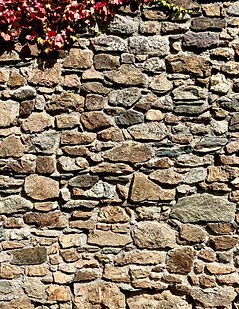cladding
Stone Masonry
Stonemasonry is very diverse- as most stones can be used for the cladding of the house. A stone house is timeless and filled with character. Stones have the environmental edge over bricks in so far as they do not require energy to be hardened, shaped or mixed. The only environmental drawback is that more mortar may be used to bind them compared to bricks (depending on the size of stones chosen.

Masonry cladding come in the form of brick or stone/ schist. Both have the disadvantages compared to weatherboards that the installation will take longer and that the cladding is very heavy. The weight of the cladding could mean a higher cost in the foundation work and material. However, masonry cladding do have the benefit of being very durable with little to no maintenance over the lifetime of the building. The materials are also natural and common.
Thermal mass
Stone has a great thermal mass, this means that stone captures heat from sunlight and releases it later back into its surrounding. This does make a case for using stones not just around fire places but also in other locations in the inside of your where the sunlight hits the stone directly.
The advantages of stone-masonry:
-
Very long lifespan
-
Minimal to no maintenance required
-
Small energy requirement for shaped stones
-
Recycling is easy as they can be used around the garden
-
Stone has a great thermal mass, storing heat that is released later which makes it an attractive indoor option to store heat in your building.
The disadvantages of stone-masonry:
-
Mortar is required to bind them together (concrete production accounts for about 5% of global emissions (4))
-
The cladding is very heavy and may require extra cost and material in the foundation work
-
Stones take longer to install as it is more labour-intensive


Sources:
(2) Bath University, 'Inventory of Carbon and Energy', Authors: Hammond, Geoffrey; Jones, Craig; Lowrie, Fiona; Tse, Peter
(3) Wikipedia, 'Brick', 09.11.2019
(4) Columbia University, Earth Institute, 'Emissions from the Cement Industry', Author: Madeleine Rubenstein, 09.05.2012
